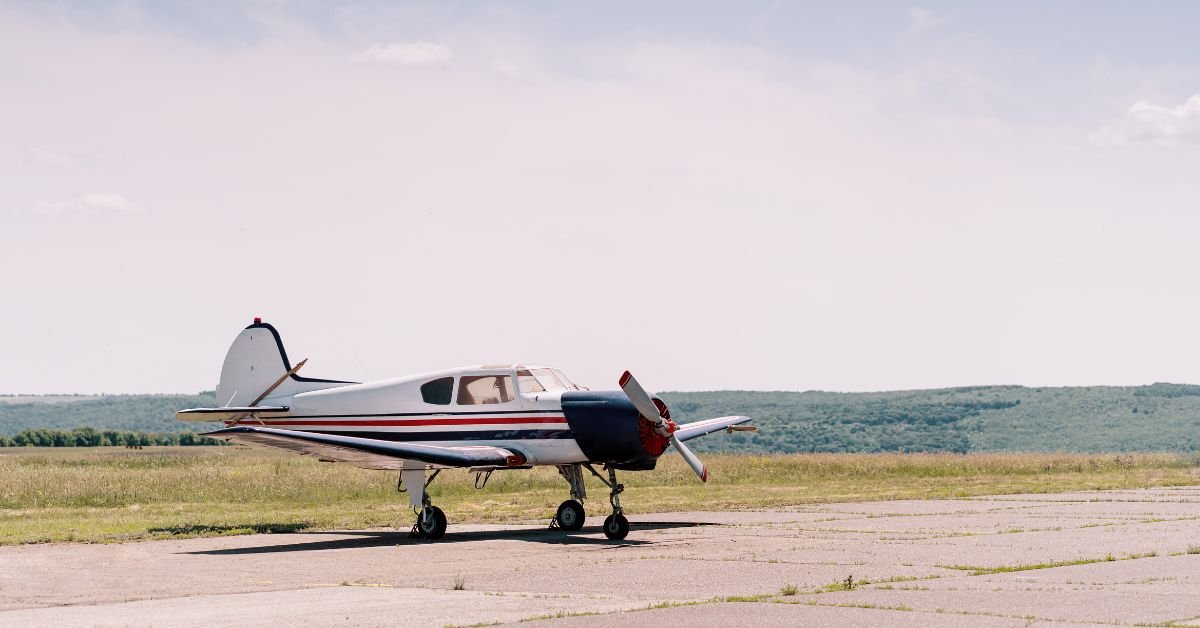Plane landing on river Hudson, you’re not alone. The story of US Airways Flight 1549’s emergency landing on the Hudson River is one of the most remarkable events in modern aviation. It’s a tale of quick thinking, teamwork, and a little bit of luck that turned what could have been a tragedy into a miracle. But what really happened that cold January day? Why did the plane land on the Hudson, and how did everyone survive?
The Day That Stunned the World: What Happened on January 15, 2009?
On January 15, 2009, US Airways Flight 1549 took off from New York’s LaGuardia Airport, bound for Charlotte, North Carolina. Just three minutes into the flight, disaster struck—a plane bird strike with a flock of Canada geese caused both engines to fail. Suddenly, the pilots faced a life-or-death situation: how to land a powerless plane in one of the world’s busiest cities.
The Emergency Landing Decision
Captain Chesley “Sully” Sullenberger and First Officer Jeff Skiles had seconds to act. With no engine power and no safe runway in reach, Sully made the call: they would attempt an emergency landing on the Hudson River. It was a move few pilots had ever attempted, let alone succeeded at.
Plane Bird Strike: The Hidden Danger in the Skies
Bird strikes are a known risk in aviation, but rarely do they bring down a modern jet. In this case, the plane bird strike was catastrophic. Both engines ingested birds and lost thrust almost instantly. The cockpit voice recorder captured the calm but urgent voices of Sully and Skiles as they assessed their options.
Why Are Bird Strikes So Dangerous?
- Engine Failure: Birds can shatter turbine blades, causing engines to lose power.
- Loss of Control: Multiple bird strikes can damage control surfaces or windshields.
- Limited Time: Pilots have only seconds to react, especially at low altitude.
The Flight 1549 incident remains one of the most dramatic examples of a bird strike leading to a full-scale emergency landing.
The Miracle on the Hudson: How the Plane Landed on the Hudson
The phrase “plane landed on the Hudson” became a global headline overnight. But the reality was far more intense than any news report could capture.
The Descent
With both engines out, Sully and Skiles glided the Airbus A320 over Manhattan, communicating with air traffic control and weighing their options. Returning to LaGuardia or reaching Teterboro Airport was impossible. The only clear path was the Hudson River.
The Landing
Sully guided the plane to a near-perfect water landing, touching down smoothly and keeping the fuselage intact. Passengers later described the impact as “hard but controlled.” Within minutes, the plane began to fill with icy water, but everyone remained calm.
The Evacuation
Ferry boats, police, and emergency crews rushed to the scene. Passengers stood on the wings, shivering in the freezing air, as rescuers pulled them to safety. Miraculously, all 155 people on board survived.
Jeff Skiles: The Co-Pilot Who Helped Save the Day
While Captain Sully became a household name, First Officer Jeff Skiles played a crucial role in the successful emergency landing. Skiles was at the controls during takeoff and quickly handed over to Sully when the crisis began. He then worked through the emergency checklist, trying to restart the engines and helping to prepare the cabin for impact.
Teamwork in the Cockpit
Aviation experts have praised the teamwork between Sully and Skiles. Their calm communication and mutual trust were key factors in the safe outcome. In interviews, Skiles has often said,
“We did what we were trained to do. It was a team effort from start to finish.”
Real-Life Example: A Passenger’s Perspective
One passenger later shared,
“I remember looking out the window and seeing the water getting closer. I thought, ‘This is it.’ But the landing was so smooth, and the crew kept us calm. I’ll never forget the feeling of standing on the wing, waiting for rescue.”
The Aftermath: Investigation and Legacy
The successful plane landing on river Hudson was hailed as a miracle, but it also led to a thorough investigation by the National Transportation Safety Board (NTSB). The findings highlighted the importance of pilot training, crew resource management, and the need for better bird strike prevention.
Changes in Aviation
- Improved Bird Detection: Airports now use advanced radar and wildlife management to reduce bird strike risks.
- Enhanced Training: Pilots receive more training in water landings and engine-out scenarios.
- Public Awareness: The story inspired movies, documentaries, and books, raising awareness about aviation safety.

Emergency Landing: What Makes It So Challenging?
An emergency landing is every pilot’s nightmare. Whether it’s due to mechanical failure, weather, or a plane bird strike, the stakes are always high.
Key Challenges
- Time Pressure: Decisions must be made in seconds.
- Limited Options: Not every location offers a safe place to land.
- Passenger Safety: Keeping everyone calm and organized is critical.
The successful plane landed on the Hudson is now studied in flight schools around the world as a textbook example of crisis management.
Plane Landed on the Hudson: The Media Frenzy
The image of a plane landed on the Hudson—passengers standing on the wings, surrounded by rescue boats—became an instant symbol of hope and resilience. News outlets dubbed it the “Miracle on the Hudson,” and the story dominated headlines for weeks.
Social Media Reaction
Within minutes, photos and tweets from witnesses spread across the globe. One tweet read,
“Just saw a plane in the Hudson River. Everyone looks okay. Unbelievable!”
The event showed the power of social media in breaking news and connecting people in real time.
The Movie: Sully and the Hollywood Retelling
In 2016, Clint Eastwood directed “Sully,” starring Tom Hanks as Captain Sullenberger and Aaron Eckhart as Jeff Skiles. The film dramatized the events of that day, focusing on the investigation and the emotional toll on the crew.
Fact vs. Fiction
While the movie took some creative liberties, it captured the essence of the story: ordinary people rising to the occasion in extraordinary circumstances.
The Pros and Cons of Water Landings
Pros
- Potential for Survival: Water landings can be safer than crash landings on hard surfaces.
- Access to Rescue: In urban areas like New York, rescue boats can reach the scene quickly.
Cons
- Risk of Drowning: Water can flood the cabin quickly.
- Hypothermia: Cold water poses a serious threat, especially in winter.
- Difficult Evacuation: Getting everyone out safely is a major challenge.
The plane landing on river Hudson succeeded because of quick action, calm leadership, and a bit of luck.
Features and Usability: Lessons for 2025
Aviation has come a long way since 2009, but the lessons from the plane landing on river Hudson are more relevant than ever. Modern planes have better bird strike protection, improved emergency procedures, and more robust communication systems.
What Passengers Should Know
- Listen to Crew Instructions: In an emergency, follow directions immediately.
- Know Your Exits: Always locate the nearest exit when you board.
- Stay Calm: Panic can make a bad situation worse.
FAQs
Q. What caused the plane landing on river Hudson?
A. plane bird strike with Canada geese caused both engines to fail, forcing the pilots to make an emergency landing on the Hudson River.
Q. Did everyone survive the plane landed on the Hudson?
A. Yes, all 155 passengers and crew survived the plane landed on the Hudson. The successful evacuation is considered a miracle.
Q. Who was Jeff Skiles and what was his role?
A. Jeff Skiles was the First Officer on Flight 1549. He assisted Captain Sully in managing the emergency and preparing for the water landing.
Q. How did the emergency landing change aviation?
A. The incident led to improved bird strike prevention, better pilot training, and increased public awareness about aviation safety.
Final Thoughts
The story of the plane landing on river Hudson is more than just a headline—it’s a testament to human ingenuity, courage, and the power of teamwork. From the split-second decisions in the cockpit to the coordinated rescue on the river, every moment mattered.
CLICK HERE FOR MORE BLOG POSTS
There’s a certain weight in the words John Authers writes—not just because of what he knows, but how he shares it. His voice doesn’t just echo facts; it builds meaning. In a world overwhelmed by rushed opinions and robotic summaries, John’s writing feels… different. It feels lived-in, thoughtful, and deeply human.
Readers don’t turn to John for headlines—they come for context. They come for that rare blend of clarity, insight, and emotional depth that turns financial journalism into something closer to storytelling. His reflections on markets, geopolitics, or human behavior aren’t just readable—they’re relatable.
What sets John apart isn’t just his experience (though he has plenty of it). It’s his ability to pause, reflect, and explain the why behind the what. He writes like someone who’s been in the room where it happens—but never forgets the reader who hasn’t.
In 2025, when AI churns out articles in milliseconds, John Authers still writes like a human—and that, more than anything, is what makes his work worth reading.











